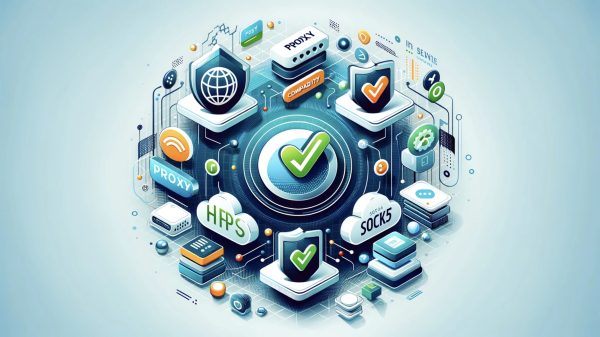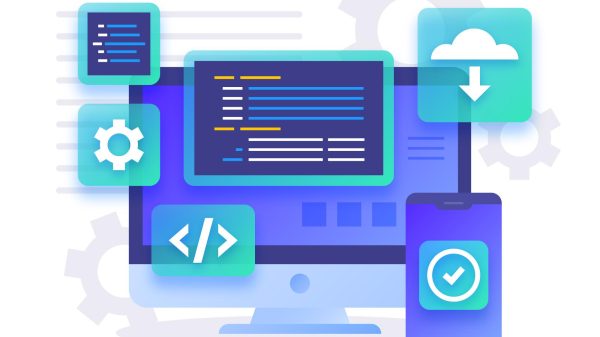No longer is the concept of a cloud a complete enigma. We have accepted that now the Cloud will be a part of daily life, even if the ramifications of the cloud change are not yet completely understood since the phrase “cloud” is used in every element of digitalization and contemporary technology.
Because we need to understand cloud infrastructure and the benefits it provides, we often overlook its significance. A deeper understanding of cloud computing is also necessary to fully appreciate the Cloud: Can you explain what it is and how it operates?
What Exactly Is “The Cloud”?
Cloud computing refers to the capacity to provide IT services over the Cloud (i.e., the Internet). A wide range of computing services was available, from hardware to software to analytics. Compared to the conventional method of data processing using on-premises facilities, Cloud Computing enables its users to function in a purely virtual environment.
As explained, Cloud Computing refers to providing a platform as a service over the World Wide Web. Cloud services may take various forms, and one of those aspects is the ability to store and share data online via a service like iCloud or Google Drive. It’s possible to break down cloud computing into two main components: the Cloud and the computing. The Cloud is the implementation paradigm for Cloud strategy. While “Computing” refers to the Cloud computing underlying service paradigm.
In What Ways Does Cloud Computing Serve Its Users?
Businesses no longer need to invest in a costly data centre or computer infrastructure to access apps and data storage. Using cloud-computing services allows businesses to pay only for the resources they use rather than the far larger sums of money and effort required to purchase and maintain their own in-house IT infrastructure. Thus, cloud-computing service providers may save money by providing the same services to many consumers.
Advantages To The Company Of Using Cloud Computing
In addition to cost savings, there are other advantages to using cloud computing. Your data is protected from natural catastrophes and cybercriminals when kept in the Cloud. Audits and compliance checks ensure that the Cloud’s security is always up to date. Cloud-based operations will also be subject to regular audits and monitoring to ensure they are secure.
In addition to having access to their work from anywhere at any time, customers of cloud computing services may do so from any device with an internet connection. Automatic updates and upgrades promote seamless real-time coordination across an organization’s departments.
Last, Cloud Computing can adjust to new circumstances while offering many services with almost limitless potential. Organizations will have a competitive edge over rivals who use more conventional computing systems thanks to cloud computing scalability.
The most forward-thinking businesses are among the first to realize the importance of Cloud Computing.
Where Can We See Instances Of Cloud Computing In Action?
A plethora of services rely on cloud computing. That ranges from personal cloud storage like Gmail or even the cloud storage of your Smartphone’s images to business cloud services enabling huge corporations to move all their data and apps online. For instance, Netflix’s video streaming service and other business operations depend entirely on cloud computing.
Many software companies are moving toward a subscription-based business model, which encourages cloud computing since users can access the company’s programmes from anywhere with an internet connection. Cloud computing has many advantages, but it also risks introducing extra expenses and vulnerabilities to businesses that use it.
When Did Cloud Computing Begin, And How Did It Develop?
Although the name “cloud computing” did not appear until the early 2000s, the idea of “computing as a service” has been present since the 1960s. At the same time, computer bureaus began offering mainframe time for rent rather than outright purchase.
The widespread availability and low cost of personal computers (PCs) and the proliferation of corporate data centres (DCs) ultimately rendered these ‘time-sharing’ services obsolete.
However, in the 1990s and early 2000s, renting access to computational power emerged as an application service provider’s utility or grid computing. The advent of SaaS and large-scale cloud providers like Amazon Web Services paved the way for cloud computing, quickly becoming the dominant model.
Different Categories of Cloud-Based Services
It is no exaggeration to say that the cloud computing services market is now worth multiple billion dollars and increasing quickly. The market research firm Gartner predicts that expenditure on the Cloud will total $260 million by the year’s end. The popularity of cloud computing is being noted by more than just Gartner.
Based on their analysis of historical trends, Wikibon predicts that the business cloud will grow at a CAGR of 19% between 2016 and 2026 (Cloud Vendor Income Projection Project, 2017). The CAGR for conventional infrastructure, on-premise technology, and old ways of outsourcing corporate processes would be -3%.
Software as a service (SaaS), infrastructure as a service (IaaS), and platform as a service (PaaS) is the three ubiquitous kinds of cloud computing services where the emotional impacts of cloud adoption are most apparent (PaaS).
Each SaaS, IaaS, or PaaS offering’s compute, storage, communication, and integration capabilities are owned by the vendor and provided as a service on an as-needed, subscription basis to the client; this is another distinguishing feature of the Cloud.
All three groups may function alone or in tandem with one another since they are made to be layered on the other. Assume a three-tiered pyramid, with SaaS at the top helping end-users, PaaS in the centre helping developers and meeting integration needs, and IaaS at the bottom helping system administrators.
What Exactly Is “Infrastructure As A Service”?
The term “Infrastructure as a Service”, (IaaS) describes the leasing of computer infrastructure components such as servers, storage, and networking, whether real or virtual. These appeal to businesses that like to create applications from scratch and maintain tight control over practically all aspects. Still, it does need advanced technical expertise to coordinate services at this level.
Pros
- Savings on expenses
- Lightning Fast
- Superb Availability
- Taking and restoring backups
- Manageability
Cons
- Risk of Being Attacked
- Connectivity Requirements in Networks
- Downtime
- Contractual ties to a single provider or vendor,
- There is Little Room for Manipulation
Features
- Superior Internet Safety
- Constantly accessible
- Automatic scalability to meet fluctuating demand
- Pay-per-use
- Online interfaces and controls
Conclusion
Increasingly, more tools that keep organizations running are being sucked into the Cloud. However, the public Cloud is only an option for some due to privacy and security concerns and compliance requirements.


















